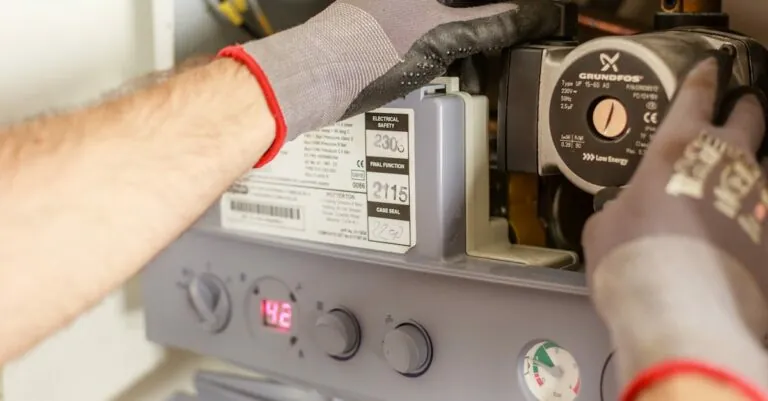Imagine this: you’ve just unboxed a stylish new furniture piece that promises to transform your space. But wait! Instead of a sleek coffee table, you’re staring at a pile of wooden planks and an instruction manual that reads like ancient hieroglyphics. Furniture assembly can feel like a rite of passage, one that tests patience and sanity.
Table of Contents
ToggleOverview of Furniture Assembly
Furniture assembly presents a unique challenge for many individuals. It typically involves multiple components that require careful handling and organization. Understanding the assembly process can significantly ease frustration. Each piece must fit together precisely, relying on a set of instructions that can often feel overwhelming.
Commonly, raw materials like wooden planks, screws, and connectors come in flat-pack forms. These items usually feature dedicated labels to facilitate identification during assembly. The assembly instructions often include diagrams to guide users through the process step by step.
A range of tools is commonly required for efficient assembly. Screwdrivers, hammers, and Allen wrenches play essential roles in ensuring all parts fit together correctly. Some manufacturers include basic tools in the package, while others require additional purchases.
Many people encounter obstacles during furniture assembly. Missing hardware or unclear instructions can contribute to assembly frustration. It’s crucial to assess all parts before starting to minimize complications.
Time is a significant factor in assembly. Simple pieces may require as little as 30 minutes, while complex items can take several hours. Proper time management can lead to a more enjoyable assembly experience.
Ultimately, thorough preparation and patience can make the furniture assembly process seamless. With organized components and the right tools, assembling furniture becomes less of a challenge and more of an accomplishment.
Types of Furniture Assembly


Furniture assembly comes in various forms, each offering distinct advantages and challenges. Understanding these types helps maximize efficiency and ensure a successful assembly experience.
Flat-Pack vs. Custom Assembly
Flat-pack furniture consists of pre-cut pieces, packaged compactly for easy transport. Often, it includes detailed instructions and necessary hardware for assembly. Many consumers favor this option due to convenience and affordability. In contrast, custom assembly involves bespoke pieces crafted to specific designs or dimensions. While this option typically provides greater personalization, the assembly process might require professional help to avoid complications. Cost differences can be significant, as custom options often carry a higher price point.
DIY Assembly Kits
DIY assembly kits cater to individuals eager to engage in their furniture assembly. These kits generally include all features required for setup. Clear instructions and labeled components enhance the user experience, making assembly straightforward for most people. Brands offering these kits often emphasize quality materials and innovative designs. Engaging in DIY assembly can foster a sense of satisfaction, transforming the process into a creative endeavor. Time invested in putting together these kits may vary, but many enjoy a rewarding experience upon completion.
Tools and Materials Needed
Preparation enhances the efficiency of furniture assembly. Identifying the right tools and materials simplifies the process.
Essential Tools for Assembly
Screwdrivers, one of the most crucial tools, come in various types, including flathead and Phillips. Allen wrenches, often included with purchases, assist in tightening hex screws. Hammers are useful for gently tapping pieces into place without causing damage. Pliers can help grip and manipulate small components effectively. Measuring tapes ensure precise alignment of larger parts during assembly. Before starting, confirm all necessary tools are available to avoid interruptions.
Recommended Materials
Wood glue provides additional stability for joints that need reinforcement. Wall anchors are useful for securing items to vertical surfaces safely. Fasteners, such as screws and nails, are typically included in the packaging but may need replacement based on individual requirements. A soft cloth can protect surfaces during assembly and clean off dust or fingerprints. Lastly, assembly manuals serve as invaluable guides for proper instructions and troubleshooting potential issues. Always gather all materials before beginning to streamline the assembly process.
Common Challenges in Furniture Assembly
Furniture assembly often presents several challenges that can frustrate even the most experienced DIY enthusiast.
Misaligned Parts
Misaligned parts frequently cause issues during assembly. Ensuring that each piece fits correctly is critical for structural integrity. Instructions may lack clarity, leading to confusion about proper alignment. Inadequate alignment can create uneven surfaces or misfit connections. Verifying the positioning of each component beforehand significantly aids the process. Double-checking measurements helps avoid common pitfalls related to misalignment. Considering a dry fit before permanent attachment also ensures that items come together seamlessly. Taking time to adjust parts as needed can save headaches later on.
Missing Components
Missing components are another prevalent challenge in furniture assembly. Often, customers discover that essential hardware is absent after unpacking. Confirming the availability of all pieces prior to starting is crucial for smooth assembly. Items like screws, dowels, and brackets might not be included, leading to delays. Tracking the contents of the packaging against the assembly manual enhances preparedness. If something is missing, contacting the manufacturer for replacements is essential. Being aware of the possibility of missing components encourages thorough inspections prior to assembly. Each step taken early on reduces frustration in the long run.
Tips for Successful Assembly
Following instructions carefully ensures that each piece fits together seamlessly. Start by reviewing the entire manual before beginning assembly. This initial step provides an overview of the process and highlights any special considerations. Take note of diagrams and component labels as they simplify identification. Measure components before attaching them, as ensuring accurate lengths can prevent misalignment. All fasteners must be securely tightened, as loose fittings can lead to instability.
Organizing your workspace plays a crucial role in a smooth assembly process. Begin by clearing a designated area to avoid distractions. Lay out all parts and tools methodically for easy access. Group similar items together, allowing for quick identification during assembly. Use containers or trays to keep small hardware visible and prevent loss. Consider utilizing a soft mat beneath the furniture to prevent damage to surfaces. Proper organization minimizes frustration and enhances efficiency, making the task more enjoyable.
Navigating the world of furniture assembly doesn’t have to be a daunting task. With the right preparation and mindset, individuals can turn what seems like a frustrating challenge into a fulfilling project. Emphasizing organization and the proper use of tools can significantly enhance the assembly experience.
By taking the time to understand the components and following instructions closely, anyone can achieve a well-assembled piece that adds value to their home. Ultimately, embracing the process can lead to a sense of accomplishment and satisfaction that comes from creating a functional and stylish living space.





